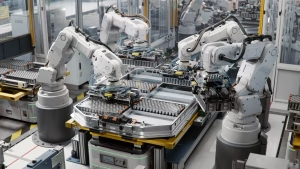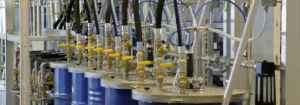Updated: 19.11.2025
Introduction
Brushless DC (BLDC) motors have become a cornerstone of modern electromechanical design — prized for their efficiency, reliability, and low maintenance. Unlike traditional brushed DC motors, BLDC motors rely on electronic commutation rather than physical contact, reducing friction and significantly extending the motor’s lifetime.
How BLDC Motors Work
1. Fundamental Components
Stator: The stationary part, typically made of laminated iron cores with precisely wound coils.
Rotor: Often constructed using permanent magnets, the rotor turns within the stator’s magnetic field.
2. Electronic Commutation
A motor controller (inverter) generates and sequences voltage and current to the stator windings.
Hall-effect sensors (or other rotor-position sensors) detect the rotor’s orientation, feeding back real-time data to the controller.
The controller uses this data to synchronize the switching of current, creating a rotating magnetic field that aligns with the rotor’s magnets — producing continuous torque.
3. Torque Production
Torque is generated through the interaction of the rotor’s magnetic field with the rotating field of the stator.
This interaction is managed precisely by the controller, which dynamically adjusts current based on rotor feedback, yielding smooth motion and efficient operation.
Advantages of BLDC Motors
High Efficiency: Without mechanical brushes, energy losses are minimized, translating to lower power consumption.
Longer Lifespan: The absence of brush-commutator wear significantly increases expected operational life.
Minimal Maintenance: No brushes to replace means less downtime and simpler upkeep.
Quiet Operation: Negligible friction results in quieter spins — ideal for noise-sensitive environments.
High Power Density: BLDC motors deliver strong torque for their size, making them suitable for space-constrained designs.
Precise Control: Electronic commutation enables tight control over speed and position — perfect for robotics, automation, and precision mechanisms.
Key Applications of BLDC Motors
Electric Vehicles (EVs): Owing to their high efficiency and compactness, BLDC motors are widely used for traction and auxiliary systems in EVs.
Industrial Automation: Robotics, conveyor systems, CNC machines, and material-handling systems often rely on BLDC motors for their reliable performance and control precision.
Consumer Electronics: From cordless power tools to high-performance fans and vacuum cleaners, BLDC motors bring durability and efficiency to common devices.
Aerospace: In actuators and control surfaces, BLDC motors provide reliable, lightweight solutions for critical systems.
Medical Devices: Their quiet, dependable operation suits use in equipment like ventilators, pumps, and surgical devices.
Design Considerations & Trade-offs
When selecting a BLDC motor for your application, consider the following:
Controller Complexity: The need for electronic commutation means you’ll also need a compatible controller — adding cost and design complexity.
Sensor vs Sensorless: Motors with sensors (e.g., Hall sensors) offer precise control at low speed, while sensorless designs are simpler but may struggle from standstill.
Thermal Management: Higher efficiency reduces heat, but thermal design (e.g., heat sinks) remains important in high-power or compact installations.
Cost: Although BLDC motors can be more expensive upfront (due to controller and sensor hardware), their efficiency and maintenance savings often offset the cost over time.
Future Trends & Innovations
Wide-Bandgap Semiconductors: Emerging inverter technology (e.g., GaN, SiC) is improving efficiency and reducing switching losses.
Integration with IoT: Smart BLDC motor systems that monitor health, performance, and predictive maintenance.
Regenerative Braking: Especially in EVs, BLDC motors are optimized for energy recovery and bidirectional power flow.
AI-Enhanced Control: Predictive control algorithms (powered by AI) are increasingly used to optimize motor performance and energy usage in real time.
Brushless DC Motors Explained FAQ
Yes. The elimination of mechanical brushes reduces friction and energy loss, resulting in higher efficiency and longer operating life.
No — there are sensorless BLDC motors. However, those with Hall-effect sensors provide better low-speed control and more precise commutation.
No. A controller (or inverter) is required to manage electronic commutation, sequence power, and interpret rotor position.
Very little. Without brushes, there’s no wear from sliding contacts, so maintenance needs are minimal (mostly cleaning and occasional checks).
Conclusion
BLDC motors deliver a compelling mix of efficiency, durability, and precision. Whether in electric vehicles, industrial automation, or high-performance electronics, their versatility and performance make them a top choice for modern engineering challenges. If you’re unsure which BLDC motor fits your application, or want help designing a control system around it, please feel free to reach out — we’re always happy to help.
Are you looking for more information? If you have any questions about how the air motor might be used in your application, feel free to reach out to us anytime.


